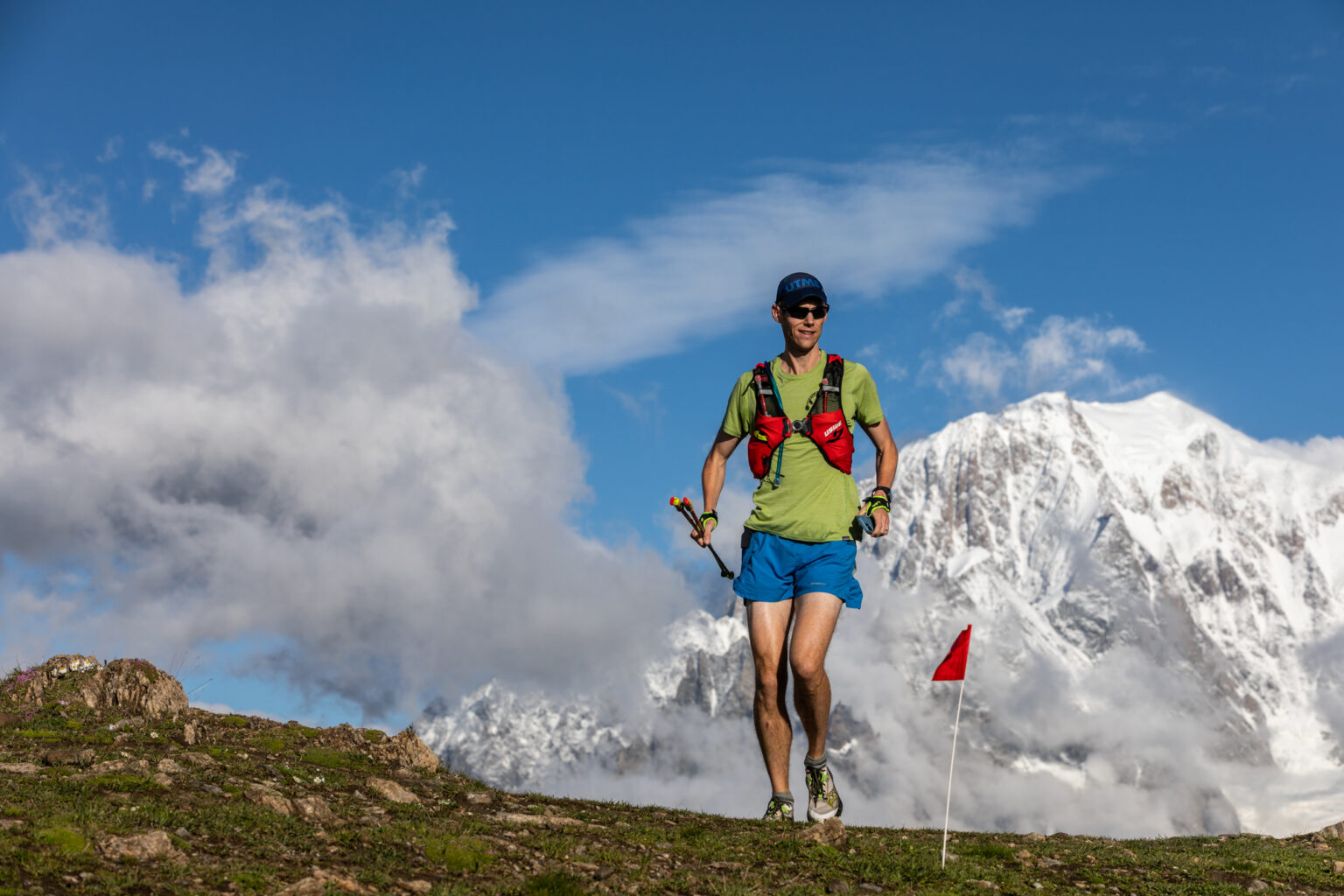The UTMB Finals in Chamonix present a formidable challenge, with a route that typically takes over 40 hours to complete. Along the way, runners encounter aid stations brimming with an assortment of cured meats and local cheeses. With just five crew access points and a single drop bag, figuring out the most effective fueling strategy for an ultra like UTMB becomes the ultimate conundrum.
The author of this article, Will Weidman, coach at Uphill Athlete, has finished UTMB (106-mile) three times, twice in the top 75 (out of 2,700 participants), and as the 3rd American in 2021. He has coached numerous athletes to success at UTMB, CCC, and OCC. Read his top 5 tips for UTMB training here.
Will is racing the 106-mile distance at the UTMB 2023. He shares firsthand insight on why fueling during UTMB is uniquely challenging and his top tips to fuel for success. Will lays out when and how to fuel so you reach the finish line strong.
To understand how to get an entry into UTMB, check out our article here.

THE CHALLENGES AT UTMB FINALS
Minimal Crew & Drop Bag Access
With the Tour de France atmosphere in towns UTMB passes through, it is easy to forget that most of the UTMB route is remote and inaccessible.
There are only five places where you have crew access: Contamines, Courmayeur, Champex-Lac, Trient, and Vallorcine. Courmayeur has the only drop bag throughout the course.
Contamines to Courmayeur and Courmayeur to Champex-Lac are particularly long stretches between support, taking most runners 10+ hours.
Time Between Aid Stations
Due to the difficulty and remoteness of the course, the time between aid stations is longer than in many other races. For example, between Chapieux and Lac Combal, runners climb and descend two difficult mountain passes in the night. This means four hours between aid for most runners.
Aid Station Fare
Those who haven’t raced in the Alps may be surprised by the options at UTMB aid stations. Staples include cured meats, local cheeses, and fruit. There are no gels and minimal hot food options.
Major aid stations like Courmayeur and Champex-Lac have a bigger spread, but remote locations like Bertone or Lac Combal are more limited.
FUELING FOR SUCCESS
Rely on Your Crew
While you need to fuel steadily throughout the race, getting in a large amount of nutrition at key aid stations is important.
In Champex-Lac in 2019, I consumed nearly 1,000 calories in the aid station alone, which was some much-needed fuel after 20 hours of constant movement.
Listen to our podcast on crewing and pacing in trail running here.

Bring More Nutrition on the Trail
Optimize Your Nutrition Product Mix
2019 was a hot year at UTMB. I started to feel off after Saint Gervais, only 20km into the race. I struggled on the relatively easy section to Contamines and was frustrated by having to run the few flat miles coming out of Contamines.
As we ascended to La Balme, I was in full-on crisis mode and felt dizzy, nauseous, and weak. Runners were passing me left and right. The idea of another 85 miles and 28,000 feet of climbing seemed preposterous.
I thought back and realized I had been sweating in the hot weather for four hours. The aid stations didn’t have many electrolyte options, and I realized I was likely low on salt.
I took an electrolyte cap, followed by a longer stop than usual at La Balme for some salty soup and crackers. I kept on a regimen of salt intake and soon felt strong again, working my way back up the field.
Weather is highly variable at UTMB. You can have sweltering weather in the valleys during the day, and freezing temperatures on the mountain passes at night.
Combined with the limited options at aid stations and sparse crew access, you need to adjust your nutrition intake accordingly and make sure you are still balancing calories, carbs, electrolytes, and fluids.
Test this out as much as you can in training.
Stock Up in Towns
Palette fatigue is inevitable in these long races, especially with each aid station having largely the same fare.
If you have crew, try to have them bring some other options that you think you’ll like – pizza, focaccia, panini. You have cell reception on much of the course, so you can call ahead.
Many towns and restaurants close down early, so it’s good to plan ahead and ensure you get what you need before night falls.
SUMMARY
It is as important to train and plan your nutrition as it is to train your legs and lungs. For me and the athletes I coach, fueling is the biggest driver of success at UTMB.
Learn the concepts of training for trail running.
Plan ahead, know how long you have between sections, and bring what you need. If you have a crew, rely on them to resupply your nutrition products and provide some different options for you in the aid station.

